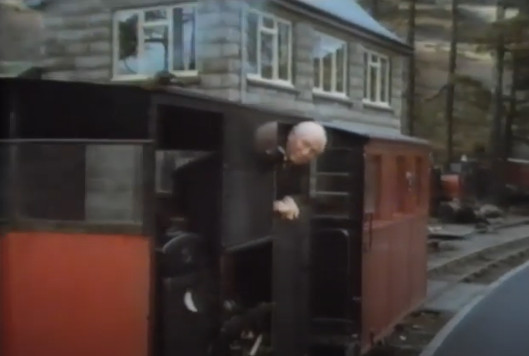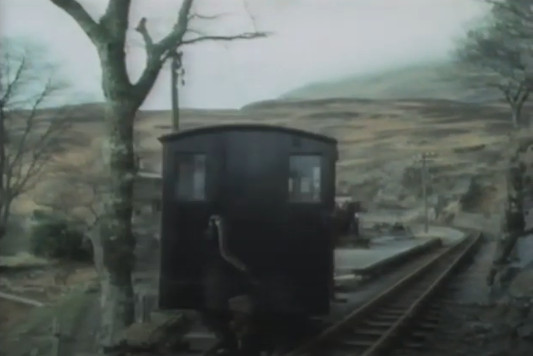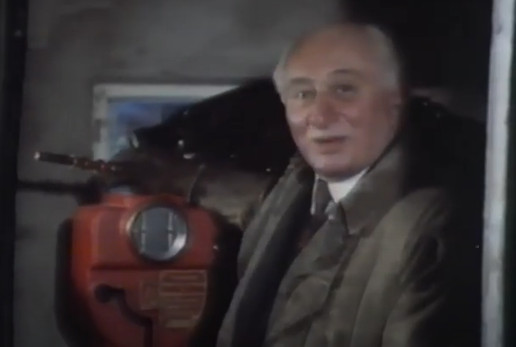This blog still gets quite a lot of hits from people searching for the locations used in the BBC supernatural drama series Being Human, particularly the house used in the first couple of series. Now, I wrote quite a bit about those two series on here, partly because at the time we lived in South Bristol, the series was filmed largely in South Bristol, and it was quite an enjoyable thing to watch. The last time I wrote about it, though, was to (successfully) predict one of the plot-lines of Series Three; however, when that series made it onto the screen ,I hardly wrote about it at all. I hardly wrote about it because, to be honest, I didn’t think it was very good.
Now, with at least two major characters killed off* at the end of Series Three, you might have wondered whether it was coming back. Google says that Series Four was announced back in March, but I have to say I didn’t notice. I did notice, however, more of those little pink filming location signs which used to pop up all over Bristol. Not by the Black Castle this time, so no more “Box Tunnel” plotline. Instead, this year, filming is going on in (drum roll) Newport, South Wales. Newport, the town city so good they called it Newport! Newport, on the beautiful River Usk, where you can get shot while having your hair done before getting your head stuck in a disused train. It’s that good.
Newport might be pretty depressing and run down in some parts, but Cardiff has plenty of areas like that too. So, my prediction is that the next series of Being Human is going to feature: some sort of dramatic, thrilling climax based around the Newport Transporter Bridge. It’s essentially the only unique thing Newport has; and if you’re going to feature it, you may as well be dramatic about it. Well, either that, or the Manic Street Preachers are going to pop up in the background, which is less likely.
Noticing that Being Human is coming back, and writing this post, has made me think about exactly why I don’t think it is any good any more; why I think it shouldn’t come back. The biggest problem I have with it, I think, is that its writers don’t really have any sense of how to expand on their fictional world but still retain believability. Each series might make sense on its own, but the three series that have been produced so far, put back to back, make no sense at all as a single work: each new series has introduced new elements which completely break the world already established.
If you’ve watched it, you might be wondering what I’m talking about here. So, I’ll elaborate. Stop reading now if you have never seen the programme but might want to watch it in the future.
Series one: we have Emotionally-Tortured Pre-Raphaelite Vampire, trying hard to give up on the whole “killing people” thing; and Evil Villain Vampire, who is going to take over the world and doesn’t see any place for brooding emotional types who think they can live alongside humans in his worldview. Evil Villain Vampire is working in the police, so he can keep vampires under-cover and make sure their crimes don’t get exposed. E-T P-R V learns to rely on his friends, who defeat Mr. Evil Villain — in the workplace, note — and forestall the great vampire takeover. Sorted.
Series two: E-T P-R V and friends are fighting against some religious “scientists” who are trying to cure evil, and exterminate it if curing it doesn’t work. Our vampire protagonist is still being broody because he’s having trouble with the whole not-killing-people thing again. So, introduce Morally-Uplifted Mentor Vampire, who gave up blood-quaffing as a dead loss some centuries back, and who, way back before the start of Series One, taught Mr E-T P-R Vampire how to not kill people to begin with.
Now, this plotline might all make sense if M-U M Vampire (ooh, an apt acronym) lived somewhere exotic, somewhere difficult for a Totterdown resident to get to.** Or, alternatively, if he’d*** been off on holiday somewhere, out of contact, for the whole of Series One. Touring the Amazon, perhaps, or spending three years trainspotting in Iceland. The only sensible explanation, indeed, is that that was indeed the case and it just isn’t mentioned: because it turns out that M-U M Vampire lives in a very nice house, literally a stone’s throw from E-T P-R Vampire’s workplace — where, remember, the Final Denoument took place in the previous series. Literally a stone’s throw. Not only did Evil Villain Vampire not notice, in the previous series, that an active let’s-not-kill-people mentor character was living two minute’s walk away, but E-T P-R Vampire could have popped round for some advice and a cup of tea in his afternoon break, and still got back to work before anybody noticed.
Series Three: the religious chaps have been defeated, the Core Team have moved to Wales, and the Evil Villain Vampire might not have been defeated quite so thoroughly as we all thought. But, what’s this? There are some other vampires! Who may or may not exist, of course. They might be somewhere in the depths of the Amazon, or they might be deeply under-cover in a second police team devoted to making sure vampire killings don’t get exposed. However, all the vampires are well-aware that these Old Vampires may exist, or may be just a myth that vampires pass down from generation to generation. All the vampires are well aware of the myth, even though it was never previously mentioned. In Series One, Evil Villain Vampire was planning to take over the world, was planning to become Vampire King Of The World, indeed, and nobody seemed concerned that there may, just may, be some possibly-mythical Old Vampires who might still be around and might disagree. In Series Three, it turns out, they were working in the same business as Evil Villain Vampire all along! But didn’t think it worth doing a thing about him, didn’t bother stepping in — although we’re presumably meant to assume that they would have stopped things going too far.
Basically, my point is that: Being Human hasn’t been thought through. It’s been planned one series at a time, and each time a series is made, the previous one isn’t even thought of. No doubt Series Four will introduce some other new characters: maybe a Great Pack of werewolves convinced that werewolves are going to take over the world, which everyone has heard of before and cunningly forgotten to mention. Or maybe the Old Vampires are going to turn out to include the team’s landlord from Series One, who hasn’t been seen for a while. Either way, something new will no doubt come in, and if the previous series are anything to go by, it will be something which would have made a vital difference to everything that has gone before, if we had actually known about it.
I will stop ranting, now. There are ways to do this sort of thing properly, but Being Human is probably beyond recovery. The annoying thing is, it would have been much better if someone had sat down, right at the start, and said: if we do get more than one series, what way will we go? And what do we have to do now, to make sure we can?
* Given that several characters are either dead or undead, and one has been “killed off for good” once before only to return when the writers ran short of plot, this is possibly not a useful measure of whether or not it will return.
** Kingswood, maybe.
*** There’s an essay in the implicit and deep-rooted sexism that shows itself in the writing of the female vampires in Being Human, but this is probably not the place for it, and I am not the person to write it. It is, however, no doubt closely related to the vampire-as-sexual-predator archetype. Here, at least, note that only the male vampires are given any chance of redemption other than death; and that the mentor who demonstrates this the most is gay.
Keyword noise: BBC, Being Human, drama, filming, ghost stories, Cymru, Wales, Casnewydd, Newport, television, vampire, werewolf.

 Home
Home



 Newer posts »
Newer posts »